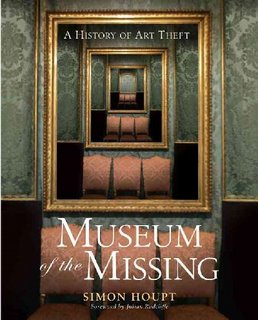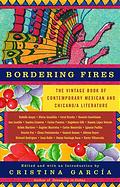With Christmas only a few days away, here is something a little different. You can consider the description of the old Sears catalog a book review if you like. There is a classic photo farther near the end. I am the character on the far left.
The Sears Catalogue
When I was a child in a small west Texas town, Christmas started early. Around Thanksgiving, we found a Sears Catalogue with a holiday picture on its cover in our mail box. It seemed to me that everyone got “the wish book” then - Grandmother, Mamoo (my mom’s mom), my mom – everyone that mattered. I remember sitting on Grandmother’s pale green leatherette sofa or on the floor in front of Mamoo’s huge wall mirror with my sister MJ with the catalog between us. A large portion of the book was devoted to women’s clothing, underwear, coats, shoes, jewelry, and accessories, and another large section was filled with clothes for men, including suits, ties, pajamas, work boots, and coveralls. Furniture, carpeting, draperies, appliances, ironing boards, automobile batteries, hunting rifles, and garden tools were for sale by mail. My sister MJ and I skipped through those pages to find the toy section, where I found lots of toy soldiers, Lincoln logs, games, and sporting goods, and MJ found a Barbie and Barbie clothes, a G.I. Joe, and an Easy Bake Oven. We saw many things we would like to have and ran to our grandmothers to show them the pages. Letting our grandmothers know what we liked usually worked. Many of the toys and clothes that we received as presents came by mail from Sears.
Shopping in West Texas
Not every Christmas present our family gave came from Sears by mail, as we purchased a few gifts from the merchants in Big Lake. Mom often bought Dad a shirt at Martin’s Department Store, and he sometimes bought her a blouse that she had already picked out and set aside at the Fashion Shop. Mom always picked up several small items from the gifts aisle at Peoples Drugs, too, where she worked and received a discount. For serious shopping, however, we went to San Angelo.
In my memory, it is always a sunny Saturday in December as we drive the seventy miles to San Angelo. Sometimes MJ and I sat in the backseat of a tan 1954 Buick with its green upholstery with Mom and Mamoo in the front seat. At other times we went with Grandmother and Granddaddy, sitting in the back of their Oldsmobile. As we drove down Beauregard Avenue toward downtown, we saw holiday decorations shaped like candy canes and bells hung from the light poles. Lights and garland crossed the streets downtown and a manger scene sat in front of the county court house. In the stores were more lights and greenery. Santa sat in a big chair in the toy department at Sears. (I never saw a duplicate Santa on the street or in Penneys or Woolworths.) I especially liked shopping at Hemphill Wells, which was the city’s best department store. On the second floor balcony, overlooking the first floor where all the ladies fashions and cosmetics were displayed was a small book store. Looking at books while my mom examined more clothes was a great relief.
The adults did all the shopping, as MJ and I had little money. We were along for the ride and lunch at Luby’s Cafeteria, where I would often get both potato salad and mashed potatoes. Mom bought all our gifts for other members of the family until I was in high school and had a little money that I had earned doing chores for Grandmother. Dad often got socks or a shirt, except for the year we gave him a hot lather machine for shaving. We gave Mamoo her favorite eau de toilet or bath powder. Once we got Granddaddy a box of special pellets that when thrown onto the fire in his fireplace blazed in many colors. For Grandmother we bought stationary or a nice handkerchief. What I do not remember is what we bought Mom. Mamoo and Grandmother probably found something like a scarf for us to give her.
School Christmas Parties
In elementary school, we had a class party on the last day before our two week vacation. We sang Christmas songs, ate cookies and cake, drank punch, and played some holiday games. Each year we had a gift exchange. We drew names about a week before the party, and I always drew a girl. Our teachers instructed us to get gifts costing no more than two or three dollars. I remember Mom buying bath powder or barrettes at the drug store for me to give to that year’s girl. The best thing I ever received came from Blaine Holland - a box of assorted Lifesavers. We left school with a little bag of candy, our Christmas art work, and a gift that we had made in class for our mothers. Mom had a plaster cast of my right hand on the wall in our kitchen for many years.
Decorating the Tree
My mom always bought our Christmas tree from one of the grocery stores four or five days before Christmas. Buck Schaible of Schaible’s Grocery always stood dozens of trees in the lot beside his store. Mom would choose a five foot tree that was well-shaped and not too dry, not as full as is popular now, and Buck would put a sold tag on it. Later Dad would bring the tree home in a pickup, put it in a bucket of water, and leave it in the backyard at least overnight. In a day or two, he put the tree in it stand, brought it in the house, and strung the lights, two or three strings of traditional ceramic bulbs with several replaced by larger frosted bulbs called snowballs. We usually rearranged the bulbs to get the yellow, pink, green, and aqua snowballs to the front. Then we could decorate.
Most of our ornaments were colored glass balls, including red, green, blue, silver, and gold. Many of these had traces of white from the year Mom had flocked the tree with artificial snow after hanging the ornaments. We also had about a dozen old hand-painted glass ornaments of various sizes and shapes, which I always enjoyed adding to the tree. As the years went by, the number of glass ornaments decreased as a couple broke each year, and Mom bought non-breakable balls. We also had half a dozen spiky stars and a tree top that looked like a pointy bell tower. Over this we layered tinsel, until the year Mrs. Duesings gave us several dozen glow-in-the-dark icicles, which we spread across the tree.
A skirt made with white cotton batting peppered with colored glitter covered our tree stand and the coffee table on which we set our tree to make it appear taller. Mom usually put her manger scene, a shoe-size wooden box under the tree. The front folded out to reveal the holy family set in the stable attended by an angel and domestic animals.
MJ and I also helped Grandmother decorate her tree after Granddaddy strung the lights, which included a small string of bubble lights, whose glass bulbs resembled upside down eyedroppers filled with colored liquid that bubbled when the lights warmed. Her ornaments were mostly like ours, except she also had a small wooden Mickey Mouse that had been Jimmy’s special ornament. Jimmy was Dad’s brother who died of leukemia in the 1930s.
We spent Christmas of 1964 on a ranch nine miles south of Big Lake. Instead of coming to town to buy a tree, we cut two five or six foot juniper trees from a pasture, loaded them into the bed of a pickup, and brought them to the house. Dad set one of them on the enclosed porch and the other in my room. Mom let me put some of the ornaments on my tree, including the glow-in-the dark icicles. She put presents for MJ and me under the tree in my room. On Christmas morning, MJ and I were up early. We let Mom and Dad sleep late and opened our presents without them. Eventually, the hum of my electric football game woke Mom. She was very unhappy with us and I never got a tree in my room again.
 Grandmother bought artificial trees for all our families in 1965 or 1966. For several years after, there were identical white flocked aluminum trees in Grandmother’s, Marian Sue’s, and our house. Unlike artificial trees of later decades, these did not look at all real. The tree limbs resembled skewers stuck into a white central wooden pole secured by a metal base. Because of the dangers of electrical shocks and fire, no light could be strung on these trees, which came with color wheel spotlights. We could not hang as many ornaments as on a real tree, so it looked pretty skimpy. Watching the light show from the color wheel was slightly hypnotic. After the fourth or fifth year, some mice in the store room gnawed the trunk, nested in the limbs, and stained the artificial snow with droppings. We did not use the artificial tree again.
Grandmother bought artificial trees for all our families in 1965 or 1966. For several years after, there were identical white flocked aluminum trees in Grandmother’s, Marian Sue’s, and our house. Unlike artificial trees of later decades, these did not look at all real. The tree limbs resembled skewers stuck into a white central wooden pole secured by a metal base. Because of the dangers of electrical shocks and fire, no light could be strung on these trees, which came with color wheel spotlights. We could not hang as many ornaments as on a real tree, so it looked pretty skimpy. Watching the light show from the color wheel was slightly hypnotic. After the fourth or fifth year, some mice in the store room gnawed the trunk, nested in the limbs, and stained the artificial snow with droppings. We did not use the artificial tree again.
Christmas Television Specials of the Past
We spent every evening watching television in my house, so we saw many of the Christmas programs. Every variety show had a holiday program. I remember seeing Perry Como in a ski sweater, singing holiday songs in front of a fireplace, with snow falling outside his window. The snow-dusted Osmond Brothers sang Christmas songs around a snowman on the Andy Williams Show; later Williams wore a ski sweater and sang in front of a fireplace. The programs were broken up by holiday commercials. Santa rode a Norelco electric shaver across snow covered hills in one animated ad. A mother ready to serve Campbell’s soup called to the children building a snowman in another. Every program and ad on television had snow. Whenever I looked out our windows, there was never any snow.
Two animated Christmas programs debuted in the 1960’s. My favorite was A Charlie Brown Christmas. I loved hearing the music that plays when Snoopy and kids dance in the auditorium, and I cheered when Snoopy’s doghouse decorations transformed the pitiful little tree that Charlie Brown bought into a beautiful, well-shaped tree. I was always a little sad when the kids began singing “Hark the Herald Angels Sing” because the program was ending. I also liked How the Grinch Stole Christmas and all the Whos in Whoville. I pitied the Grinch’s little dog who had to pull the big sled through a lot of snow. Both programs featured lots of snow.
I do not remembering ever seeing It’s a Wonderful Life or Miracle on 31st Street on either of our two television stations, but we saw White Christmas every year. We were always reminded that it would not be Christmas without snow.
Have a happy holiday!


















